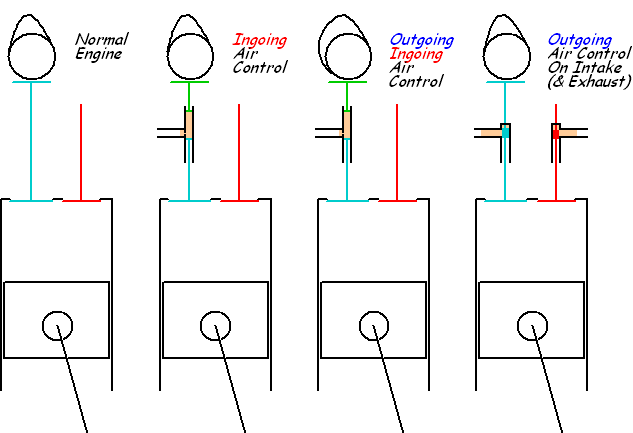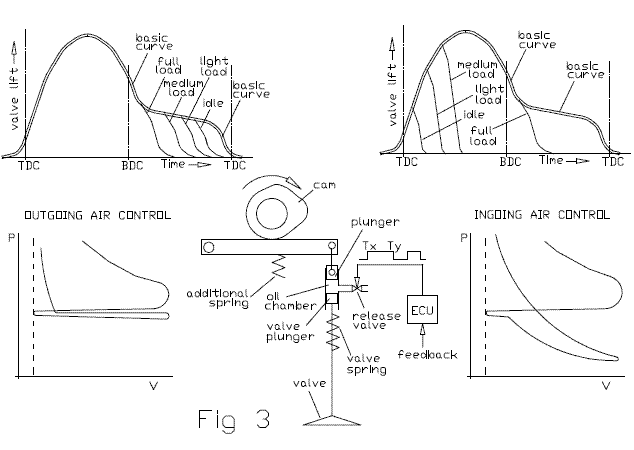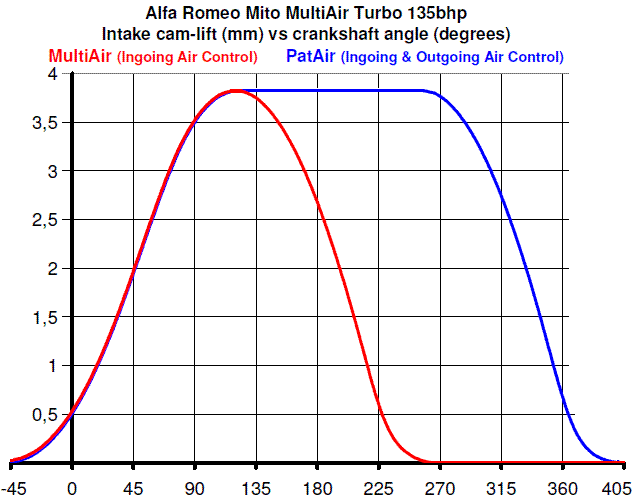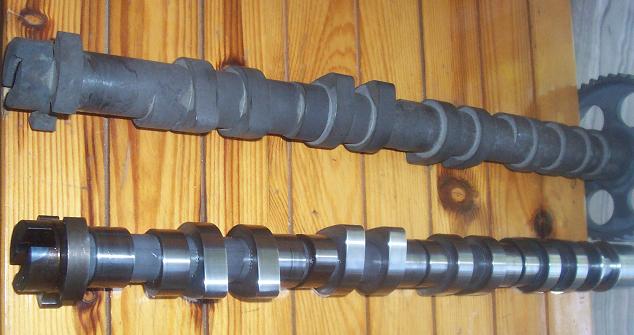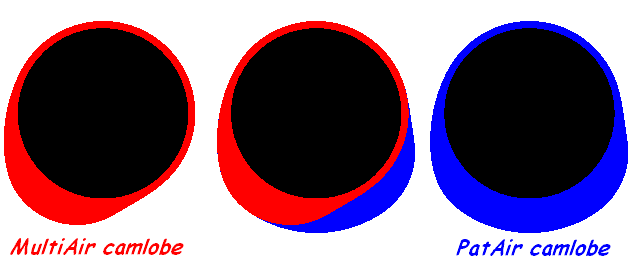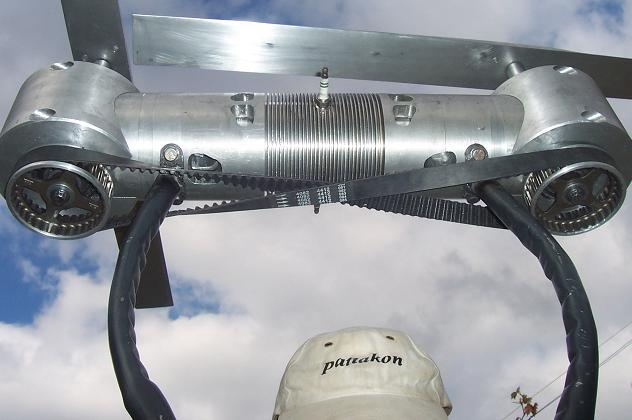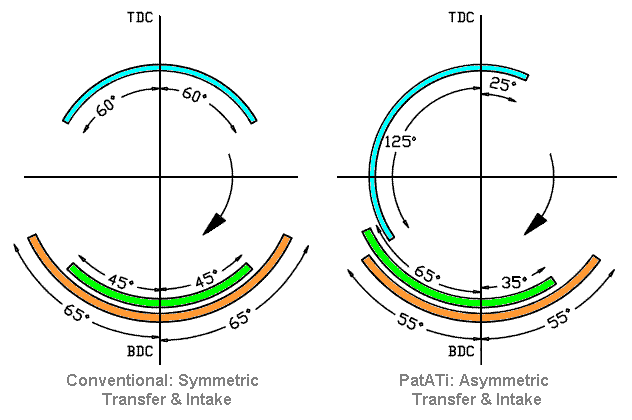Hello uniflow.
Thanks for the youtube videos.
The PatATi Opposed Piston of the video is for a specific use: to power Portable Flyers.

Two counter-rotating crankshafts share a common / compact combustion chamber (the loop scavenging allows a narrowing at the center of the cylinder making the combustion chamber more compact and more efficient without spoiling the scavenging efficiency; the narrowing in cooperation with the pistons creates two squeeze areas which improve the turbulence and swirl, resulting in faster and cleaner combustion).
With zero phase difference between the two crankshafts (which leaves the lightweight synchronizing mechanism completely unloaded) and the common combustion chamber (i.e. common pressure onto the two piston crowns), the basis of the engine (i.e. the body of the pilot) remains perfectly rid of inertia and of combustion vibrations.
The basis of the engine (i.e. the body of the pilot) needs not to provide any reaction torque (not even at extreme / instant changes of revs and load).
With the symmetric counter-rotating propellers and crankshafts, the total “gyroscopic rigidity” is zero, i.e. the engine with the propellers can “instantly” (as instantly as with the propellers stopped) vector to the desirable direction.
All the above constitute a true neutral propulsion unit for Portable Flyers: neither vibrations, nor reaction torque, nor gyroscopic rigidity; only a force that can be instantly and effortlessly vectored towards the desirable direction.
The propellers diameter (1m) and their direct driving from the two counter-rotating crankshafts limits the engine revs at 5,000rpm (wherein the propeller tip speed is M0.77 and the mean piston speed is only 13.3m/sec for reliability and fuel efficiency).
In case of emergency (for instance: overloaded take-off during a rescue) the revs can increase, say at 5,800 rpm giving a tip speed of M0.9)
Yves Rossy ( known as Jetman ) with his fixed-wing jetpack proves in practice the theory behind the pattakon Portable Flyers.
The video
https://www.youtube.com/watch?v=Czy0pXRRZcs with the two Jetmans in a “dogfight” above Dubai shows how easily and precisely the rider controls, with his body, the flight.
Rossy compromises with no take-off ability, no landing ability, no hovering ability, very small range, very small flight duration, less than poor fuel efficiency, extreme ownership and running cost.
With the fixed / solid wing on his back, Rossy has also to compromise with the top horizontal speed of his Flyer.
A retractable wing would be preferable: smaller (and with less drag) at high speeds, larger at lower speeds to provide the required lift; isn’t this what a wingsuiter does by extending or retracting his hands and legs?
No matter how useless (as a transportation means) seems today the JetPack of Rossy, Rossy shows the way. Rossy is doing a great and pioneering work.
If you look at a Personal Flyer as a serious transportation means, you will soon discover that the quantity of the mechanical energy (not power, energy) that eventually pulls or pushes the Flyer forwards (and needs to be carried at take off) is of vital importance.
Thanks
Manolis Pattakos


